new posts in all blogs
Viewing: Blog Posts Tagged with: England, Most Recent at Top [Help]
Results 1 - 25 of 132
How to use this Page
You are viewing the most recent posts tagged with the words: England in the JacketFlap blog reader. What is a tag? Think of a tag as a keyword or category label. Tags can both help you find posts on JacketFlap.com as well as provide an easy way for you to "remember" and classify posts for later recall. Try adding a tag yourself by clicking "Add a tag" below a post's header. Scroll down through the list of Recent Posts in the left column and click on a post title that sounds interesting. You can view all posts from a specific blog by clicking the Blog name in the right column, or you can click a 'More Posts from this Blog' link in any individual post.

By: Lizzie Furey,
on 7/25/2016
Blog:
OUPblog
(
Login to Add to MyJacketFlap)
JacketFlap tags:
Oxford,
England,
British,
*Featured,
international law,
travel guide,
Antonio Cassese,
Blackwell's bookshop,
International Association of Law Libraries,
Magdalene College,
Museum of the History of Science,
oxford university press museum,
libraries,
Law,
Add a tag
This week, the International Association of Law Libraries is holding its 35th Annual Course in Oxford, United Kingdom. Oxford University Press is delighted to host the conference’s opening reception in our own offices on Great Clarendon Street.
The post The perpetual Oxford tourist: what to see and do in the city of dreaming spires appeared first on OUPblog.
T 20 / 20 T ICC World Cup हमारे देश में क्रिकेट को लेकर बहुत प्रेम है भारत पाकिस्तान का मैच इस बात का जीता जागता उदाहरण है. पाकिस्तान तो टी 20 मैच की इस सीरीज से बाहर ही हो गया है पर जैसे जैसे मैच आगे बढता जा रहा है वैसे वैसे मैच के […]
The post T 20 / 20 T ICC World Cup appeared first on Monica Gupta.

By: JOANNA MARPLE,
on 3/11/2016
Blog:
Miss Marple's Musings
(
Login to Add to MyJacketFlap)
JacketFlap tags:
picture book,
Biography,
book review,
picture books,
Shakespeare,
New York,
Book recommendation,
England,
usa,
acting,
resources for teachers,
Perfect Picture Book Friday,
WNDB,
Lee n Low Publishers,
abolitionism,
Ira Aldridge,
Diversity Day 2016,
Ira's Shakespeare Dream,
Add a tag
Title: Ira’s Shakespeare Dream
Written by: Glenda Armand
illustrated by: Floyd Cooper
Published by: Lee & Low, May 2015
Themes: African Americans, biography, Ira Aldridge, Shakespeare, acting, diversity, abolition of slavery in the USA
Ages: 7-11+
Genre: Picture Book Biography
Opening:
IRA COULD NOT KEEP STILL as he waited in the balcony of … Continue reading →
By:
Guest Posts,
on 2/11/2016
Blog:
The Children's Book Review
(
Login to Add to MyJacketFlap)
JacketFlap tags:
Wilkie Collins,
Sir Arthur Conan Doyle,
Teens: Young Adults,
Best Kids Stories,
Carina Axelsson,
Model Undercover series,
Brain Twisters,
Mysteries,
Philip Pullman,
Ages 9-12,
Book Lists,
Chapter Books,
Fashion,
Nancy Drew,
London,
England,
featured,
Great Britain,
Agatha Christie,
Books into Movies,
Add a tag
Mysteries and London go together like tea and cake or jeans and Converse. Although not all of my favourite English mysteries take place in London, many do. Here are three (okay, maybe a few more than just three) of my top mystery novels set in London.

By: Hannah Paget,
on 1/23/2016
Blog:
OUPblog
(
Login to Add to MyJacketFlap)
JacketFlap tags:
Books,
History,
Literature,
Religion,
shakespeare,
church,
England,
religious,
British,
catholic,
catholicism,
protestant,
Elizabethan,
Editor's Picks,
*Featured,
Reformation,
Theatre & Dance,
Arts & Humanities,
Illuminating Shakespeare,
Gillian Woods,
william shakespere,
Add a tag
What was Shakespeare’s religion? It’s possible to answer this seemingly simple question in lots of different ways. Like other English subjects who lived through the ongoing Reformation, Shakespeare was legally obliged to attend Church of England services. Officially, at least, he was a Protestant. But a number of scholars have argued that there is evidence that Shakespeare had connections through his family and school teachers with Roman Catholicism, a religion which, through the banning of its priests, had effectively become illegal in England. Even so, ancestral and even contemporary links with the faith that had been the country’s official religion as recently as 1558, would make Shakespeare typical of his time. And in any case, to search for a defining religious label is to miss some of what is most interesting about religion in early modern England, and more importantly, what is most interesting about Shakespeare.
The post What was Shakespeare’s religion? appeared first on OUPblog.

By: Eleanor Jackson,
on 1/10/2016
Blog:
OUPblog
(
Login to Add to MyJacketFlap)
JacketFlap tags:
British,
Europe,
1066,
EU,
European Union,
British history,
*Featured,
English history,
10th century,
English exceptionalism,
english kingdom,
EU-sceptics,
exceptionalist,
George Molyneaux,
The Formation of the English Kingdom in the Tenth Century,
West Frankia,
Books,
History,
France,
England,
united kingdom,
Add a tag
There is nothing new about the notion that the English, and their history, are exceptional. This idea has, however, recently attracted renewed attention, since certain EU-sceptics have tried to advance their cause by asserting the United Kingdom’s historic distinctiveness from the Continent.
The post The exceptional English? appeared first on OUPblog.
By:
Elizabeth Varadan,
on 1/7/2016
Blog:
The Children's Book Review
(
Login to Add to MyJacketFlap)
JacketFlap tags:
Health,
Courage,
Ages 9-12,
Historical Fiction,
Chapter Books,
Oliver Jeffers,
England,
World War I,
Books for Boys,
John Boyne,
Middle Grade Books,
Post Traumatic Stress Disorder,
Add a tag
Stay Where You Are & Then Leave will appeal to middle grade readers interested in twentieth century history, life in England during World War I; also anyone who has had to deal with a parent changed by trauma.
I write romantic mysteries for a niche market, my stories deal with art, travel, a bit of mayhem and romance. I might preface that with-I love art and I love to travel-and have been fortunate to be able to do so. The old adage write what you know and love is true.
When I started writing, I knew my novel would be set in Paris. In my youth, I lived there for a year, and have since gone back a few times. It stood to reason that my first romance should be set there. I’m familiar with the city, and over the years from my perspective, little has changed in the City of Light. The Louvre now has Pei’s Pyramid at the entrance, a few buildings have been added, but the age old charm, the cobblestones, the meandering streets, the essence and soul are still very much there.
The first time I visited Bath, England, many years ago, I said I must come back, and I did. My second book is set there. My third hotel book, is set in magical and mysterious Venice. All three cities are unique and romantic places.
My heroine is an artist, and through her eyes, I introduce my readers to my favorite artists, allow her to live in exciting places, give her mysteries to solve, and someone to love. The best of all worlds.
For me it is essential to visit the place I write about, get a sense of the culture, the everyday, mundane activities that make up our lives. The magical moment of sitting in a cafe, sipping an espresso, and watching people go by. An image is created that will allow a glimpse of that perfect intimate moment. A sculpture in a garden described so well that the reader can almost reach out and touch a sinew, that is the wonder of the written word.
Rodin has always set my pulse racing, his work is strong, exuberant, poignant to the point of agony, and sometimes even mischievous. I tried to bring that sense of joy and discovery to my hero in A Hotel in Paris, and hopefully to my readers. I find solace in art, for me it’s therapeutic. You don’t have to be an art scholar to enjoy it, it’s everywhere we turn, it surrounds us, all we have to do is take note.
Imagine tea at the Pump Room in Bath, and that first sip of the heavily scented Earl Grey tea, you take a deep whiff to savor the smell of the bergamot oil, take a bite of that a fresh scone still warm, loaded with clotted cream and strawberry preserves-except that I skip the cream and go directly for the jam, lots of jam. Those are all real memories that will enrich a story.
Visit a restaurant that has been in business since the early 1600s, watch out as you step down on the crooked stairs and touch the warped wall, coated with gobs of thick paint as you continue your descent that doesn’t seem to end, and then you gingerly sit down in a rickety old chair and hope you won’t be sitting on the ancient brick floor instead.
From the Rodin Museum in Paris, to the Pump Room in Bath, to the dark and narrow canals in Venice, where the water mysteriously shimmers in the moonlit night. It’s all there. Familiarity with a location makes it easier to write about, it makes it come alive.
Even though I write contemporary romance mysteries, I love history and art, and that is what I write about. It goes back to the beginning, write what you know and love.
Cheers,
Margot Justes
A Hotel in Paris
A Hotel in Bath
A Hotel in Venice
A Fire Within
Blood Art
www.mjustes.com

By:
hannahehrlich,
on 10/14/2015
Blog:
The Open Book
(
Login to Add to MyJacketFlap)
JacketFlap tags:
UK publishing,
Publishing 101,
international publishing,
How We Did It,
Diversity, Race, and Representation,
Diversity 102,
diversity study,
research,
england,
Add a tag
 Discussion about diversity in books, at least around here, is often focused on the US market, but the challenges we face regarding diversity here in the United States don’t start and end within our borders. Many countries around the world find themselves struggling with the same growing gap between who is represented in their literature and who their citizens actually are.
Discussion about diversity in books, at least around here, is often focused on the US market, but the challenges we face regarding diversity here in the United States don’t start and end within our borders. Many countries around the world find themselves struggling with the same growing gap between who is represented in their literature and who their citizens actually are.
The international scope of these problems presents us with a unique opportunity to learn from each other and to share knowledge. What works? What doesn’t? What else can we try?
In April 2015, a writer development agency in London called Spread The Word released a comprehensive 44-page study about Black and Asian writers and publishers in the UK marketplace. Supported by  the Arts Council of England, the study delved deep into the experiences of minorities in all aspects of publishing, from acquisitions to literary festivals to creative writing degrees. Here are six important points from that study that I think we can learn from:
the Arts Council of England, the study delved deep into the experiences of minorities in all aspects of publishing, from acquisitions to literary festivals to creative writing degrees. Here are six important points from that study that I think we can learn from:
- New entry-level programs to increase diversity are not enough. For publishers that are serious about increasing diversity in their workforce, entry-level diversity programs must be established in combination with a deeper look at company culture at all levels. Companies should compare pay, retention, and promotion rates of white and non-white staff, suggests Rare Recruitment’s Raphael Mokades: “If you do that rigorous analysis and…you find that BAME [Black, Asian, and Minority Ethnic] people are leaving more quickly or taking longer to get promoted, then you have one of two issues: either all the BAME people you recruit are crap, in which case your recruitment is broken and you need to fix it, or–and this is more likely–there is institutional bias going on and you need to work out what it is and you need to stamp it out.“
- Writers of color are often pushed into the “literary” category, effectively distancing them from the mainstream and more lucrative genres. A survey of UK authors found that 42% of authors of color wrote literary fiction, by far the biggest genre for authors of color in the poll. By contrast, only 4% published in the crime and women’s commercial fiction genres, two genres that sell in far larger quantities than literary work. Diverse authors often felt that they were encouraged–or pushed–into the literary fiction genre. This means that authors of color are often at a commercial disadvantage, especially if they want to be full-time novelists.
- Authors of color in the UK feel pidgeonholed, too. One African Caribbean writer is quoted as saying, “There is a sense that if you are a Black writer, you should be writing about that–being Black. I have heard publishers say, ‘She’s Black, what is she doing writing about Australia?’” This is especially interesting because in the US, this phenomenon is often tied to the power of major ethnic-focused literary awards like the Coretta Scott King Award. But in the UK, without those awards, pidgeonholing of authors of color still happens.
- A primary problem for diverse graduates seeking careers in publishing is access to personal publishing contacts as well as paid internships. The biggest entries into publishing include having a contact in the industry and serving unpaid internships. As the study says, “It should be a matter of concern to the industry that a primary route into the business poses a significant barrier to those outside the affluent professional classes.“
- There are few people of color working in HR. People of color in UK publishing are most often employed in the editorial department (35%), finance department (35%), and in social media/online (35%). Only 4% of survey respondents said they had a person of color in their HR departments, which affects not only recruitment and retention but also general company culture.
- Diversity initiatives start up and then die again. Over the last decade, several programs have emerged to help recruit more diverse candidates for publishing jobs. However, many have petered out over lack of funding or leaders. What is required in order for these initiatives to be successful, the study suggests, is “management buy-in,” that is, a commitment from people at the senior level of publishers to sustaining these programs and committing the resources to do so.
You can read the full report here. While it is clear that the UK, like the US, has serious diversity problems, it’s nice to see such a comprehensive study on the state of their industry. What would it take to create something similar within the US? What groups would we want to see involved in an effort like this?
It’s also incumbent on all of us to ask ourselves: what does the UK now know that we still don’t know…and how can we find out?
Born with a severely clubbed foot, Ada Smith, 10, has been kept imprisoned and abused by her Mam in a one room flat her whole life. Mam sees her foot as a mark of shame and humiliation, and so Ada never learned to walk, scooting around on her bum as she waits on Mam and younger brother Jamie, 6. Then one day, Ada decides to learn to walk, keeping at it despite the pain and blood.
Then, when war comes to England, Ada is told that Jamie will be evacuated, and she will remain in the flat - bombs or no. But Mam doesn't know Ada's secret and when evacuation day arrives, she and Jamie take off for the train station together. Eventually arriving at a small countryside village, all the children are selected by residents except Ada and Jamie, who are taken to the home of Susan Smith (no relation) and left in her care.
But Susan is depressed, mourning the death of her friend (though clearly more than friend), Becky. The two women had lived there together for years and Susan had inherited the property. The last thing she wanted now were two children to take care of. And yet, she does. She feeds Ada and Jamie, buys them new clothes and shoes to replace the dirty, raggy things they arrived in, and allows them to find their own way through a certain amount of benign neglect.
And Susan has a pony named Butter that Ada determines to learn how to ride and care for. Soon, she is riding all over the village and surrounding area. Susan has also taken Ada to a doctor about her foot, and she has been given crutches to help her walk. But when Jamie begins school, Ada refuses to go not wanting to admit she can't read or do simple math. Eventually Susan figures it out and offers to teach her at home - an offer not very welcomed by Ada. But why not?
Ada and Susan are two people carrying around a lot of physical and emotional baggage, thrown together by a war they don't really feel connected to and which at first doesn't feel quite as real as the personal war they are waging with themselves. But gradually, they forge relationships with each other and begin to feel like a family. And then Mam shows up and takes the Ada and Jamie back to London, despite the bombing and Ada is forced to scoot around on her bum once again.
Now that they have seen another side of life, is it over for Ada, Jamie and even Susan?
What a powerful story
The War That Saved My Life is. It is everything that makes historical fiction so wonderfully satisfying. There is lots of historical detail about London and the countryside in those early war days, including the rescue of British soldiers from Dunkirk (Susan's house is on coastal Kent, the closest point in England to Dunkirk).
I thought that Susan and Ada were drawn well, with lots of depth to their personalities, but not Jamie so much. He really felt like just a secondary character, mostly there for contrast and to move the story along in a believable way. The shame Mam felt over Ada's foot is quite palpable, but also seemed to empower her with the ability to abuse her daughter, making her plain scary, though a rather one dimensional character at the same time.
One of the things I found interesting is that in the beginning Ada, the child, is such a strong, determined character, while Susan, the adult, was kind of weak and irresolute. And yet, they have things to teach each other. And to her credit, Bradley doesn't actually come out and directly let the reader know that Susan and Becky were partners, but its clearly there.
If your young readers loved
Good Night, Mr. Tom by Michelle Magorian, they are sure to love
The War That Saved My Life. If they haven't discovered
Good Night, Mr. Tom yet, perhaps it's time to introduce them to both of these fine books.
This book is recommended for readers age 9+
This book was an ARC eceived from the publisher


By: Shelf-employed,
on 1/30/2015
Blog:
Shelf-employed
(
Login to Add to MyJacketFlap)
JacketFlap tags:
magic,
YA,
adventure,
book review,
historical fiction,
book trailers,
series,
England,
J,
18th century,
digital audiobook,
Add a tag
Tripp, Ben. 2014. The Accidental Highwayman: Being the Tale of Kit Bristol, His Horse Midnight, a Mysterious Princess, and Sundry Magical Persons Besides. New York: Tor Teen.
Can I tell you how much I like this book? I reviewed it several months ago for
AudioFile Magazine and could hardly wait until they published my review so that I could freely blog about my affinity for it! Although "swashbuckling" is the term I've seen most often in reviews of
The Accidental Highwayman, I would characterize it as a mix of daring deeds and derring-do, of historical fiction and magical conviction. You can read my official review
here, I listened to the audio version, but would guess that the printed copy is equally enjoyable.
To summarize:
Amidst a grim 18th century English setting arises the accidental highwayman, Whistling Jack. Teenager Kit Bristol makes the unlikely yet unavoidable transformation from circus performer to manservant to famous highwayman tasked with the rescue of a mysterious princess from an enchanted coach. Narrator Steve West employs the English "standard accent" for his presentation of the gallant robber. He delivers non-stop action and suspense while maintaining an air of wise contemplation suited to this retrospective narrative of daring deeds from a magical past.
This is the first in an expected series. Judging from the effort expended on the series' official website,
http://kitbristol.com , they knew right out of the gate that this one would be popular! Enjoy the goofy trailer (there are two more on the site).
Note:As a fledgling ukulele player myself, I love that Ben Tripp plays the ukulele in this trailer. 
I write romantic mysteries for a niche market, my stories deal with art, travel, a bit of mayhem and romance. I might preface that with-I love art and I love to travel-and have been fortunate to be able to do so. The old adage write what you know and love is true.
When I started writing, I knew my novel would be set in Paris. In my youth, I lived there for a year, and have since gone back a few times. It stood to reason that my first romance should be set there.
New architectural structures reflect a modern appeal, but the old is appreciated and treasured. The Louvre now has Pei’s Pyramid at the entrance, a few buildings have been added, but the age old charm, the cobblestones, the meandering streets, the essence and soul are still very much there.
The first time I visited Bath, England, I told myself I must come back, and I did. My second book is set there. My third hotel book, my current WIP is set in magical and mysterious Venice. All three cities are mystical and romantic places. Venice has captured my heart perhaps as no other city-there is a constant pull to go back and see what I have missed.
My heroine is an artist, and through her eyes, I introduce my readers to my favorite artists, allow her to live in exciting places, give her mysteries to solve, and someone to love. The best of all worlds.
For me it is essential to visit the place I write about, get a sense of the culture, the everyday, mundane activities that make up our lives. The magical moment of sitting in a cafe, sipping an espresso, and watching people go by. An image is created that will allow a glimpse of that perfect intimate moment. A sculpture in a garden described so well that the reader can almost reach out and touch a sinew, that is the wonder of the written word.
Rodin has always set my pulse racing, his work is strong, exuberant, poignant to the point of agony, and sometimes even mischievous. I tried to bring that sense of joy and discovery to my hero in A Hotel in Paris, and hopefully to my readers. I find solace in art, for me it’s therapeutic. You don’t have to be an art scholar to enjoy it, it’s everywhere we turn, it surrounds us, all we have to do is take note.
Imagine tea at the Pump Room in Bath, and that first sip of the heavily scented Earl Grey tea, you take a deep whiff to savor the smell of the bergamot oil, take a bite of that a fresh scone still warm, loaded with clotted cream and strawberry preserves-except that I skip the cream and go directly for the jam, lots of jam. Those are all real memories that will enrich a story.
Visit a restaurant that has been in business since the early 1600s, in Bath and watch out as you step down on the crooked stairs and touch the warped wall, coated with gobs of thick paint as you continue your descent that doesn’t seem to end, and then you gingerly sit down in a rickety old chair and hope you won’t be sitting on the ancient brick floor instead.
Stand on top of the Rialto Bridge in Venice, look down at the Grand Canal, and the mesmerizing traffic below, boats gliding on water expertly and avoid contact. Sip an espresso in a cafe and listen to a gondolier serenade you from afar.
From the Rodin Museum in Paris, to the Pump Room in Bath, to the dark and narrow canals in Venice, where the water mysteriously shimmers in the moonlit night. It’s all there. Familiarity with a location makes it easier to write about the experience, it makes it come alive.
Even though I write contemporary romance mysteries, I love history and art, and that is what I write about. It goes back to the beginning, write what you know and love.
Cheers,
Margot Justes
A Hotel in Paris
A Hotel in Bath
Blood Art
Hearts & Daggers
Hot Crimes Cool Chicks
www.mjustes.com
In
A Bear in War, a young girl named Aileen Rogers sends her beloved teddy bear to her father, a medic in Europe with the Fifth Canadian Mounted Rifles during World War I, in the hope that it would keep him safe from harm. Unfortunately, Aileen's father didn't return home, dying on the battlefield, but Teddy did.
Now, it is 1940, the world is at war again and England has decided to send as many children as possible to Canada to keep them safe. Aileen Rogers is all grown up, working as a homefront nurse, whose present job is excorting the English children to their wartime foster homes. And yes, she still has Teddy, carrying him in her pocket in hope that seeing him will help the children feel less afraid.
As a ship arrives, Teddy notices that two small children, Grace and younger brother William, 5, look particularly lost and afraid. With a long ocean voyage behind them and now facing a long train ride across Canada, Aileen and Teddy take them under their wing. William is allowed to keep Teddy when they arrive at their destination. And so, for the rest of the war, Grace, Teddy and Wiliam live on a farm, helping their host family and keeping in touch with the parents by post.
The war lasted five years, and by the end, William was 10 years old. Grace and William return to England and their parents, and Teddy is returned to Aileen.
This lovely, gentle story about separation is narrated by Teddy, an old hand at being away from Aileen, and so someone who really understands the feelings of loneliness and anxiety that William feels at being so far away from his mom and dad. Sometimes, just having a warm and furry toy is enough to provide just the right amount of reassurance needed to get through something difficult.
Along with and complimenting Teddy's narration are beautiful, realistic oil paintings by Brian Deines. These illustrations are the same softness to them that Teddy's words offer.
Author Stephanie Innes created A Bear in War and Bear on the Homefront used family memorabilia, including letters, photographs, Aileen's journal and, of course, Teddy. Teddy was donated to the Canadian War Museum. You can hear about it in the short video below (after the annoying ad).
This book is recommended for readers age 6+
This book was purchased for my personal library


By: Kathy Temean,
on 11/7/2014
Blog:
Writing and Illustrating
(
Login to Add to MyJacketFlap)
JacketFlap tags:
inspiration,
Advice,
Process,
England,
illustrating,
authors and illustrators,
Illustrator's Saturday,
Cheltenham College of Art in Cheltenham,
Ilustrationweb.com,
Sholta Walker,
Interview,
Tips,
picture books,
Add a tag
 Sholta Walker was trained and graduated as a painter in 1988 and since 1995 he has worked professionally as a full-time artist and illustrator.
Sholta Walker was trained and graduated as a painter in 1988 and since 1995 he has worked professionally as a full-time artist and illustrator.
The great majority of his work has been for children, with clients across the World, including Harper Collins, Random House, Egmont, Annick Press, The BBC, Macmillan and Oxford University Press.
Most of the illustrations you see here combine digital techniques with more traditional skills and media. He uses vigourous ink line work, which is usually digitally coloured and enhanced. This has given him an opportunity to produce illustrations for my clients which give great scope for expressing ideas.
Some of the work shown here is also available as limited edition
prints.
His published books include Long Grey Norris, King Arthur, Bug Wars and The Beastly Beast.., a compendium of short stories by author Garth Nix. I have recently completed work for a book by Michal Kozlowski called Louis, the Tiger Who Came From the Sea.
Here is Sholta discussing his process:
Creating ‘Bug!’ and Brer Fox
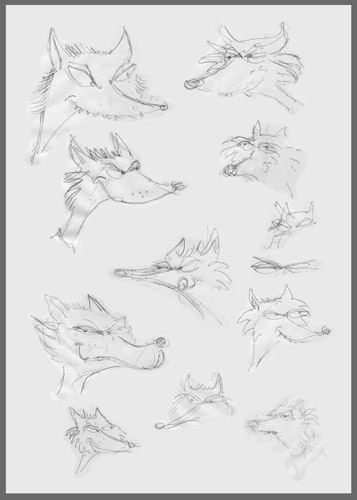
I made these drawings a few years ago. Both at the time were fairly experimental, but borrowed heavily from methods I was already regularly using. Brer Fox was a character I was asked to develop along with his nemesis Brer Rabbit, for a UK publisher. Bug! I made when I worked briefly with an animator-friend while he was working on his Masters Degree in animation.
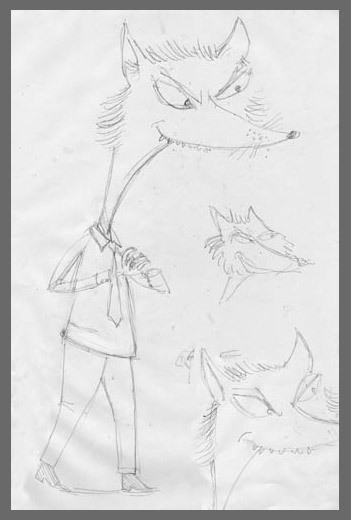
The picture always begins with a drawing on paper. If I’m working on a character I always rough him or her out in pencil. It usually takes several attempts to create the character I’m after. It’s important to get this stage right. Any decisions made now will set the tone for the whole image and are likely to remain with you to the end of the project. The drawing process helps inform the image you have in your head, which then feeds back to your drawing. At its best this busy two-way street of drawing and imagining is a marvelously efficient creative process.

When I have the character I want, I either trace it through a lightbox or work directly over the top in Indian ink with a dip-pen. The type of commission will dictate how free and expressive I am with the pen. In the case of Brer Fox particularly, I was trying to work very freely. One way I do this is to create all the initial pencil sketches as quickly as I can. When I find the drawing I like I then reproduce it by drawing over the top with my pen at a similar speed. This gives the drawing energy and enables me to exploit the naturally temperamental nature of a traditional drawing nib when it’s loaded with ink.
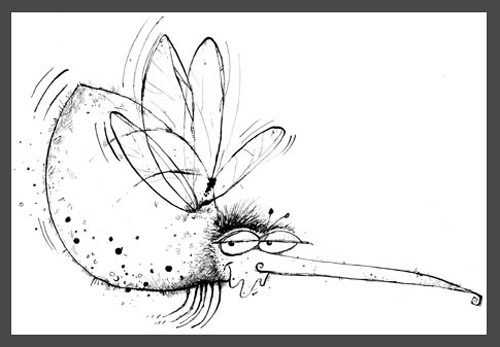
While still fairly loose, Bug! was a little more considered. Also, I created the bug character and his background as two separate drawings and combined them in Photoshop later.
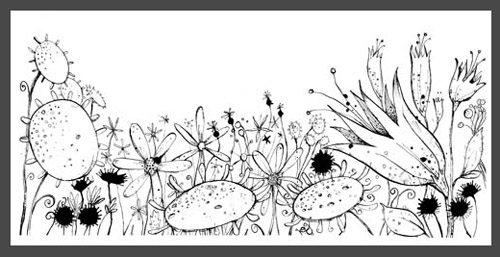
Once the ink is completely dry, any pencil marks are erased and the drawing is scanned and opened in Photoshop. The ink line now has to be separated from the the paper surface. To help improve definition I usually increase the contrast before selecting out the black lines in one piece. The drawing part of the scan is then pasted into a new document, creating a new layer over a white background layer. The original scan is now discarded. At this stage I take the opportunity to have a good look at the image and to erase any dust specks and unwanted ink spots that were picked up in the selection. I may also make any adjustments or small additions to the drawing using Photoshop’s pencil and brush tools. Finally I ‘multiply’ the layer to prevent any whitening of the pixels in the final artwork. Because I like the honesty of a hand made ink drawing I make no further digital enhancements to it.


In the case of Bug!, the character’s colour was created in Illustrator. I imported the line drawing (without the garden) into Illustrator, then, on a new layer, between the white background and the drawing layer, I put in the colour in a series of simple, fairly roughly drawn shapes. In more complex images I may create the colours on several layers, but on a simple image like this, one colour layer is sufficient. Brer Fox was slightly different. He stayed in Photoshop because in this case I didn’t want the flatter look that Illustrator tends to give my drawings. The layering technique however is identical, with the basic under-painting on the figure created using the lasso tool to make a shape into which I drop the colour. Further painting, shading and colour were then added with various brush tools. A basic background layer is also quickly rendered at this stage.
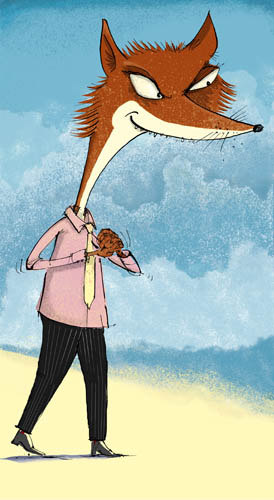

To create the textures in Brer Fox I went back to paper and ink. All the effects in this image are made using either ink applied through a mouth diffuser, (a simple breath-powered spraying device) or from an old toothbrush. The results are then scanned and separated out as in the original drawings. They are then collaged into the artwork, each on a separate layer. For Brer Fox I also experimented with some scans of torn paper. With Bug!, only the garden received this treatment. Once colouring of the insect character was complete in Illustrator, I returned him to Photoshop and combined him with the garden scene that I had drawn and coloured separately in Photoshop using the textures I made in a similar way to those previously described.

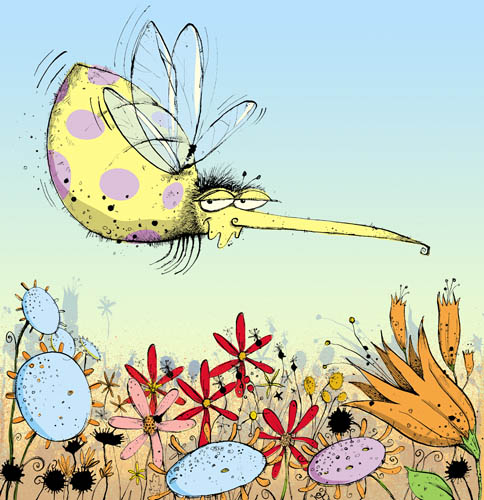
Finally, I added any extra bits and spent some time continuing to tweak the drawing. Some layers are switched off or discarded and occasionally some basic effects are added as in Brer Fox’s drop shadow. I’ll often go back at this stage and draw some new elements (extra flowers maybe) that I think might further improve the image. These will then be scanned and added to the drawing, colouring them up as necessary. A key feature of much of my work is that the process remains very fluid right up to its completion.
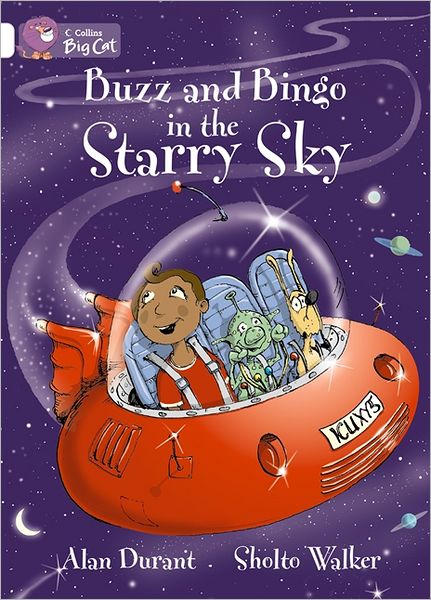
How long have you been illustrating?
Full-time, around twenty years. I spent a few years before that working part time on occasional commissions that came my way.

What made you choose to you study art at Cheltenham College of Art in London?
That’s Cheltenham College of Art in Cheltenham, England. Cheltenham is a large town about one hundred miles West of London. I had a bit of a shaky start in fact. In England, most visual arts degrees begin with a year-long Foundation Course, which most students are expected to complete, usually at a different college, before beginning their three-year degree proper. My foundation year was very enjoyable and successful, but I left still unsure in which direction I was going to take my art. Eventually I chose Fine Art with a painting specialism, but I think my lack of certainty was picked up during the several interviews I attended at various art colleges and found to the surprise of most people that knew me that I wasn’t offered a place at any of them on the first round. So I got a job and tried again a few months later. I was finally accepted at Cheltenham. I’d like to say this was the college I had my sights on all along; that I had studied the work of the tutors and lecturers there; that I was drawn to the verdant Cotswold Hills that rise majestically above the town, but none of that would be true. Nope. It turned out they were the only college that would have me.
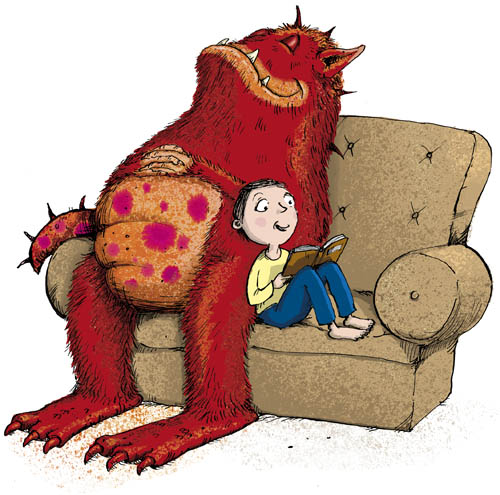
What was the first painting or illustration that you did where someone paid you for your artwork?
I’m not too sure, but I think it was probably a tiny drawing for one of those classified small ads you see in the back of newspapers. It was around 1986.
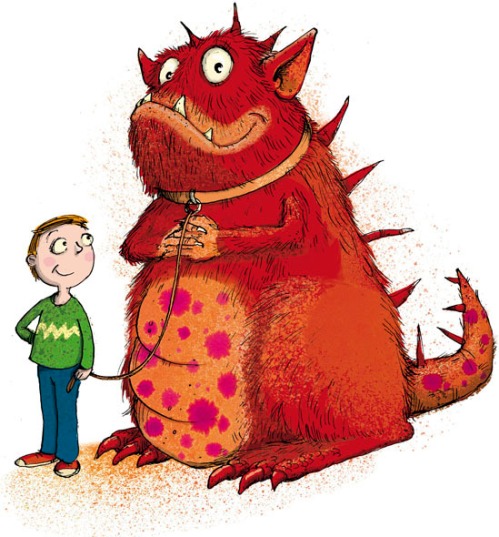
What type of job did you do right after you graduated?
When I graduated I had no idea what to do. Looking back I think plenty of ex-students, particularly with art degrees find themselves in a similar situation. I’m not sure how it is now, but there was absolutely zero consideration given by the colleges as to what their students would do when they left. I don’t think this is necessarily a bad thing because fine art courses should not be job-training courses. So when I left I discovered two things pretty quickly: first, I needed to earn some money and second, degrees in Painting do not make you very employable. I was no longer comfortable at home, so I moved to London where most British students seem to pitch up after graduating. I worked briefly at the famous Cornelissen and Son art shop near the British Museum. The shop’s been trading since 1855 and has and still does supply materials to some of the greatest names in British Art. Then I bought a bike and spent a year as a bicycle courier, risking life and limb on the London streets.
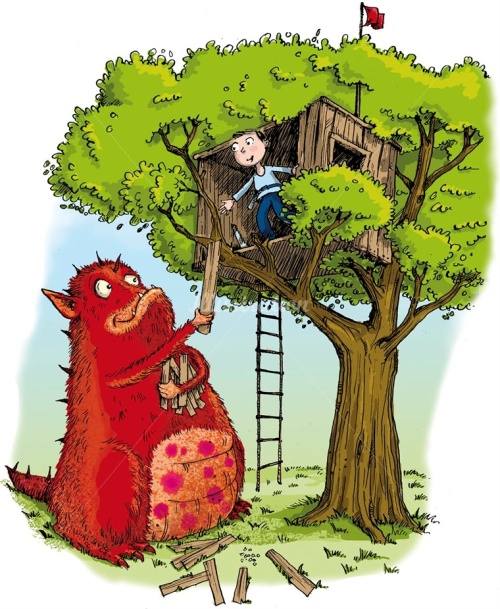
How did you decide you wanted to go into the freelance art business?
After a year or two of struggling to pay my way in London, I thought I needed to make a decision. As a child, making pictures was always something I enjoyed doing and was good at. My degree had pointed me towards traditional oil painting but at that time I could see no way that I was going to be making oil paintings for a living. It was a very slow start. My dad was publishing a music magazine at the time and he managed to convince the editor (thanks Paul!) to ask me to try illustrating a few things. The jobs were very occasional and fairly straightforward, but it was these simple commissions that really got the ball rolling for me. I continued working in various low-paid jobs, but it was those occasional illustration commissions that gave me a sense of purpose. Doing something I enjoyed while being paid to do it. I decided fairly quickly that this was what I needed to pursue.
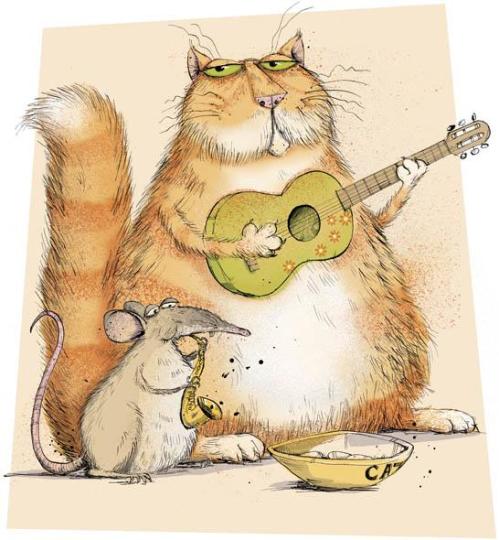
When did you decide you wanted to illustrate for children?
I never decided, my work seems to lend itself to that. When I began as an illustrator I just drew stuff. I had no idea what the illustration business was like and never gave a thought to the idea that illustration could be classified into ‘types’. After my degree, my first portfolio consisted mainly of miniature versions of what I had been producing at art college. Many were very dark and introspective, typical art student stuff really. The colours were full of dark reds and blues. Lots of angst. I was still somewhere between a painter and an illustrator. All my techniques were from three years’ training as a painter working in oils on canvas, so as an illustrator I really had to start from scratch. That meant finding new materials and methods that suited my approach and were practical. As my work developed, much of it became brighter and I found I could express and develop in my work a kind of knowing humour and a sense of the absurd that I have always enjoyed and has always been a part of my character I think. Adults seem to like this at least as much as their children and it appears in most of my best work. I think that this has always been there in my work even during my student days, but as I’ve evolved as a working illustrator I’ve learned to refine it and make it more accessible.
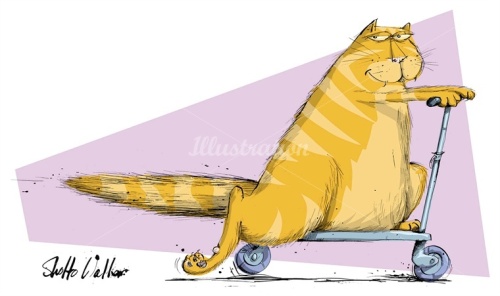
How did you get the job to illustrate Buzz and Bingo in the Starry Sky with HarperCollins?
Wow, that one was quite a while ago. It came through my agent. In fact, now I think of it, it was probably the first full book commission I had with Harper Collins. I think it was also the first book I illustrated digitally. It was actually part of a series for young readers and as far as I’m aware has been very popular in British schools. I have met several parents over the years that know me by name and then realize their son and daughter is learning to read with one of my books. It’s always nice when that happens. My sister lives in Spain and she called me one day to say that her daughter was reading a book I had illustrated as part of her reading program. That was perfect because I had included a dedication to her and her brothers on the title page. I think my sister cried.

Have you done any other books with HarperCollins?
Yes several. At least four or five.
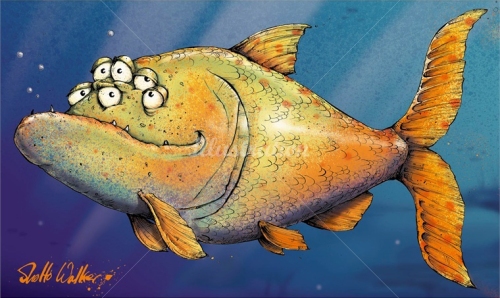
What was the first picture book that you illustrated? And how did that contract come your way?
My first picture book was probably one of the Buzz and Bingo series. I had illustrated a few books before that, but they were more for slightly older readers, so they weren’t strictly speaking ‘picture books’. I had worked on other commissions for Harper Collins prior to Buzz and Bingo so I had built up a bit of a track record. I often think that is, at least in part, how it works. Once a client is happy you can make a deadline, you are professional and reliable and assuming they like what you do of course, you are likely to be asked to take on bigger projects.

How many books have you illustrated?
Well, if you mean both part books and as full cover-to-cover commissions, then the answer’s probably hundreds. If you mean whole books, then probably around thirty.
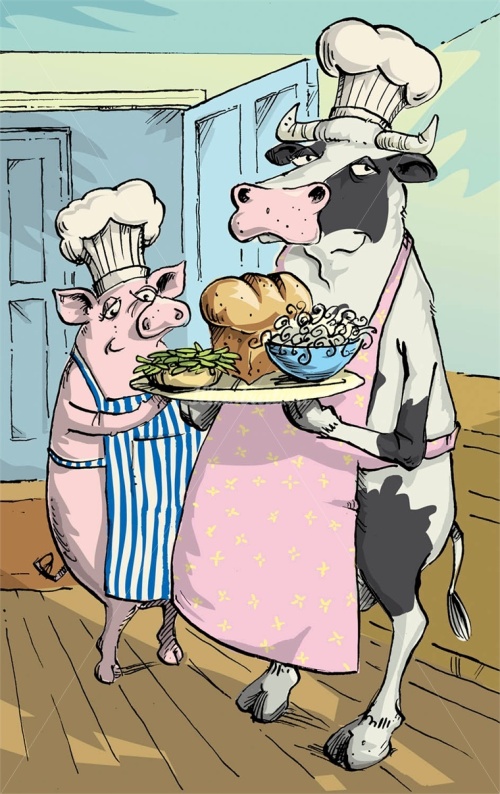
Before you had an Art Rep., what did you do to help connect with art directors and editors and find illustration work?
It was a long and painful process. Once I had set my mind to being a professional illustrator I knew I needed to start building a portfolio to show round. I put together about fifteen drawings that included several of the commissions I had been picking up as well as some of my own work. One idea I had was to buy a few magazines and find articles in them that I felt I could illustrate. If they were successful I would then include them in the portfolio. The next step was to travel to London from Bath where I was by then living and show my work around. In those days, before the internet and online portfolios, this was the only way to do it. I must have spent a fortune on fares, not to mention postage for all the mail shots I made. I picked up very little direct work from all this effort and expense, but I don’t regret it at all because I really got to see what it was I needed to do while showing me what the publishing, design and advertising world outside my studio really looked like. I also still remember to this day some of the dozens of busy art directors and designers I saw who, almost to a person, patiently leafed through my portfolio and usually sent me away with some valuable words of advice. Anyway, I did that for a year or so until I decided it was time to reassess the situation. It was then I turned my mind to getting an agent. I thought if I found the right one, they would do all that work for me.

How did you connect to your artist agency, Illustrationsweb.com? How long have they been representing you?
Yet another trip to London in around 1995 with a list of illustrator’s agents in my pocket finally brought me together with Illustration, which is Illustration USA Inc’s parent company. At that time they lurked up a flight of stairs in a dusty old office in the heart of Soho, West London. They were called Garden Studio then and had been since 1929 when they were first established. It was there I met the excellent Harry Lyon-Smith who took my portfolio away and told me to come back after lunch. When I returned he offered to represent me and that was that.
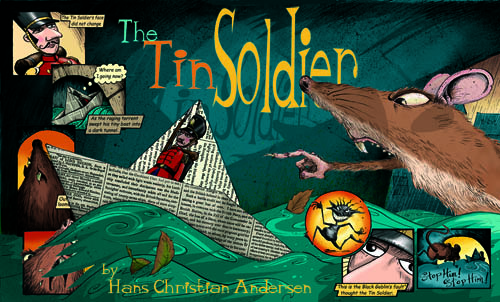
Tell us a little bit about the 200-year-old building in your backyard and the studio you have in there.
I think it was once just a simple stone outbuilding. It was converted to something reasonably habitable about twenty-five years ago and given an electricity and water supply. I’m in Somerset, England, so everything older than about a century is built from stone. The walls are two feet thick, which is normal in old buildings here, but it makes mobile (cell)-phone use next to impossible. If anyone needs to call me at work it’s landline only I’m afraid. Oh, and the roof leaks a bit. I sit beside a window that looks out onto our garden and an apple tree that produces a rare local apple called Ashmead’s Kernal. If you can ignore their gnarled and crusty appearance and take a bite you’ll find they’re incredibly juicy and sweet.
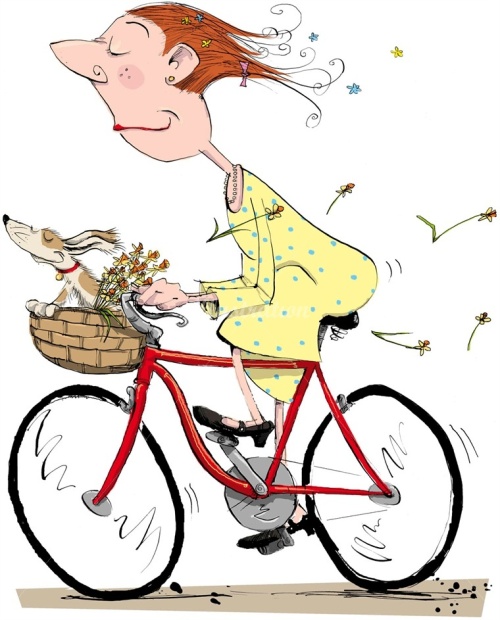
Have you done any illustrating for children’s magazines?
No, not so far.
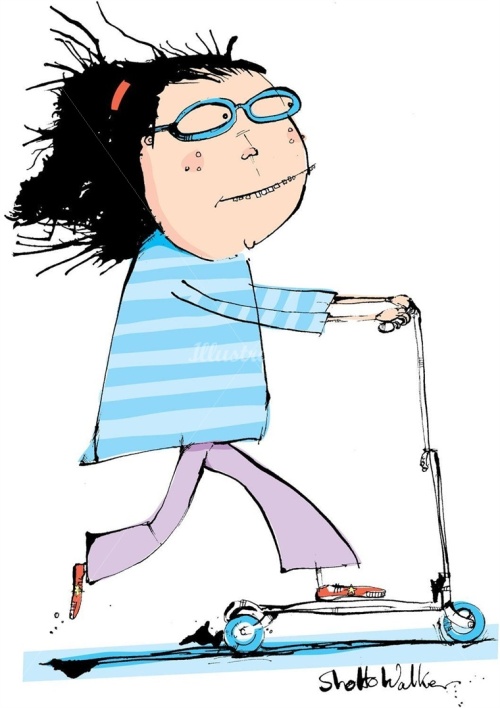
What is your favorite medium to use to do your illustrations?
Dip pen and Indian ink. Then Photoshop and Illustrator.
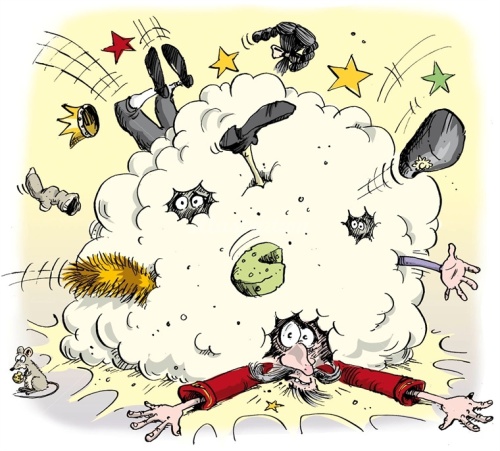
Has that changed over time?
Yes. When I began as an illustrator I developed a way of working that had its beginnings in my pre-art college mid-teens. I would create a pencil drawing that I would render in water-colour and gouache. I would then work over the whole thing in coloured pencil, before putting an ink line drawing on top. This made for beautifully vibrant illustrations, but was hugely labour-intensive. It meant I would often be up all night for even the simplest commissions. I realized this wasn’t sustainable, so in around 2000 I bit the bullet and bought an Apple Mac. Over the next year I figured out a way of working that still retained plenty of me, but was just far more efficient.
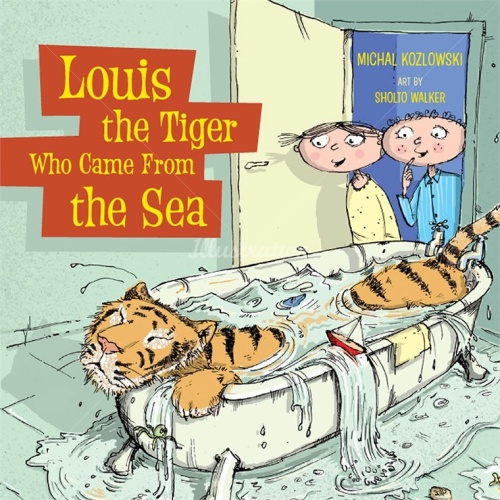
What do you consider is your first big success?
Probably Louis, the Tiger Who Came From the Sea. It’s a difficult question really because I’m very self-critical and I’m usually reluctant to pore over past work too long. I’m always thinking about the next opportunity to get it ‘right.’

How did that come about?
Apparently out of the blue. It’s how all the best work comes. You’re sitting around one day trying to remember how you ended up doing what you do when the ‘phone rings. Or the email arrives, as it usually is these days. In the case of Louis the Tiger, Colleen Macmillan at Annick Press contacted Stacey at my agent’s New York office and offered me the commission. They had seen my portfolio and decided I was the one they wanted to illustrate Michal Kozlowski’s wonderful story. It’s great when that happens.
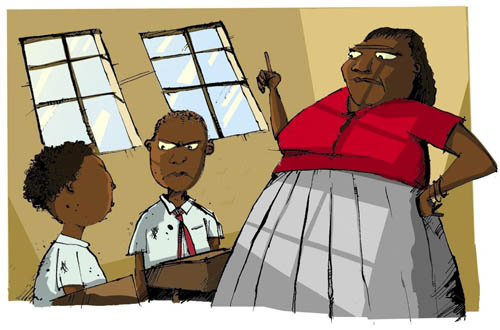
Do you ever want to write and illustrate a picture book?
Yes
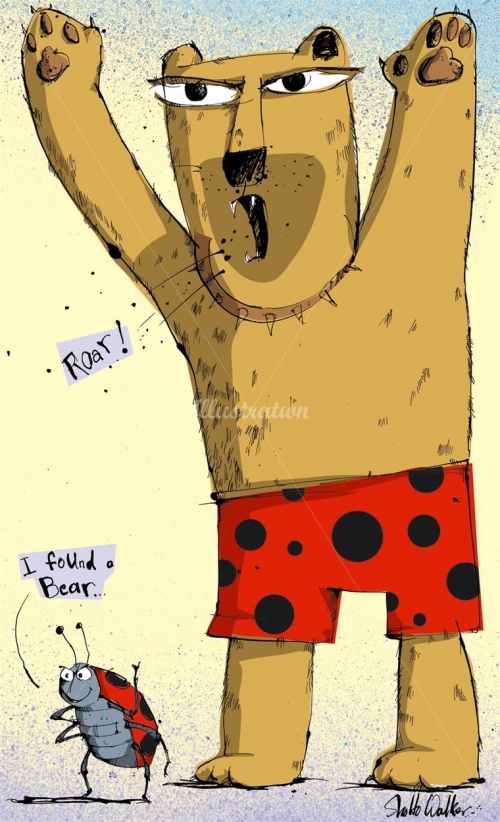
Would you be open to working with an author who wants to self-publish a picture book?
Absolutely. In fact I’ve illustrated a few of these already. Initially I was quite wary of working with self-publishing projects because commissions like these can lack structure and any real management process. I worried the job could really get out of hand. Before you commit I think it’s important to read the manuscript (don’t forget they’ve usually not been through any kind of editorial process) and also try to get a clear idea of what the client (author) is expecting from you and what if any experience they have of producing a book. The great thing about self-publishing commissions is they often give you great creative freedom because there are no sales departments controlling the process as so often happens with established publishers.
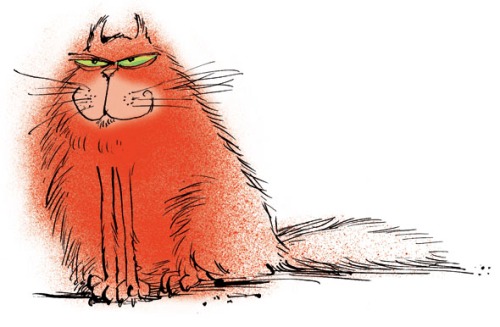
Do you take pictures or do any types of research before you start a project?
Very rarely. If an illustration requires a certain animal for example I usually reach for one of several natural history or wildlife reference books I keep. I recently completed ‘How to Slay a Werewolf’, a new book for Conran Octopus here in the UK. The story’s set in early Twentieth Century England so I had to get the clothes more or less accurate and then there was the werewolf of course, which required a fair bit of preliminary work. The internet has changed everything. In the past research usually meant repeated trips to the local library and bookshops and owning shelves groaning with reference material. Now most research is a mouse click away.
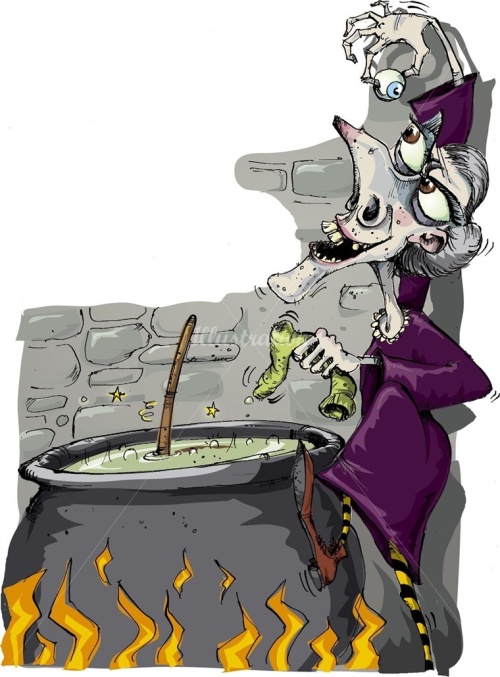
Have you done any work for educational publishers?
Yes, lots.
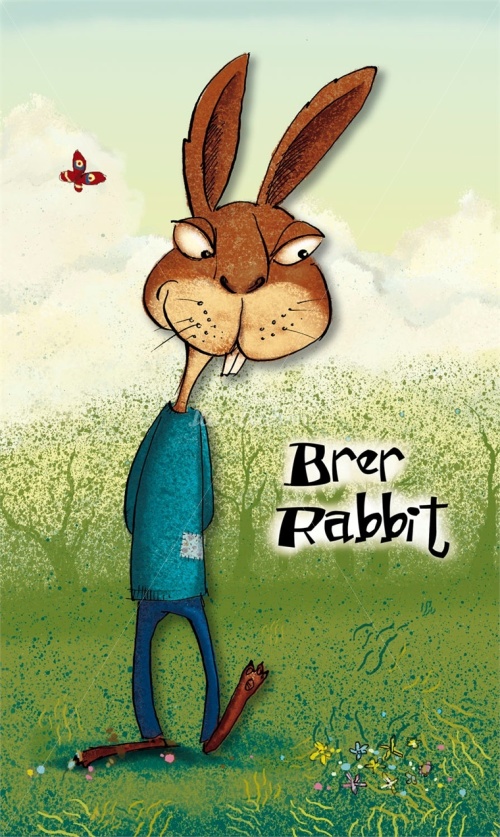
Has all your work come from European publishers?
No. I have worked on projects from around the world. My agent has seen to that. As well as most of Europe, I’ve worked for clients in the USA, Australia, Canada, South Korea and South America.
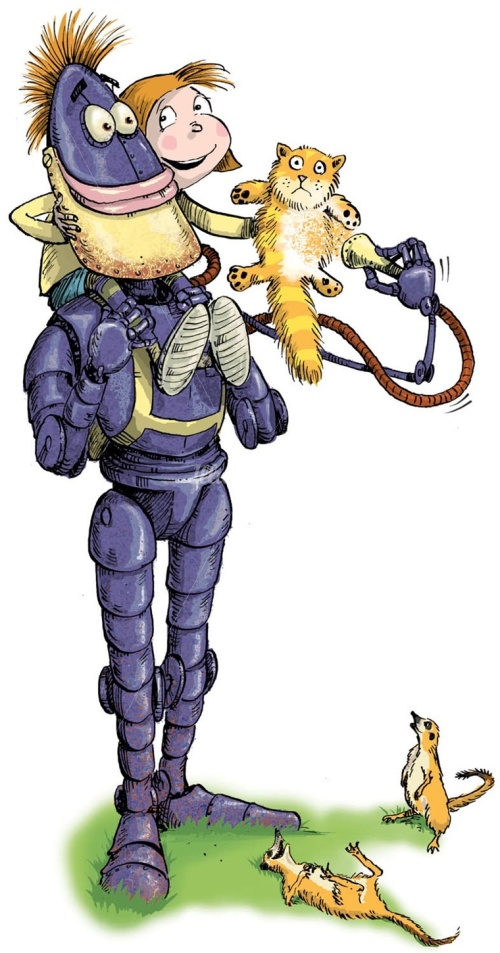
What is the one thing in your studio that you could not live without?
My bicycle, hanging on the wall.
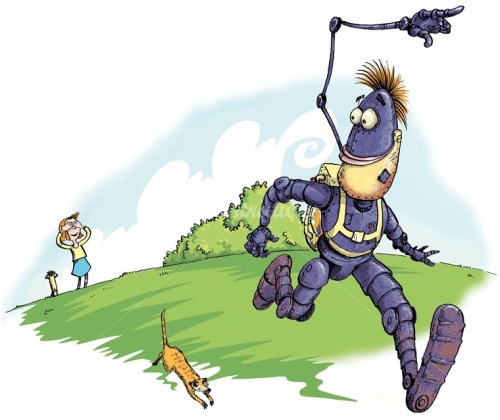
Do you try to spend a specific amount of time working on your craft?
I don’t usually need to make a conscious effort to because I’m usually busy. This was one of the reasons I was drawn to illustration in the first place. I knew if I was a working illustrator and I was getting regular work, the commissions would keep me busy – I wouldn’t have to risk being stricken too often with that dreaded lack of motivation so many artists can suffer from.
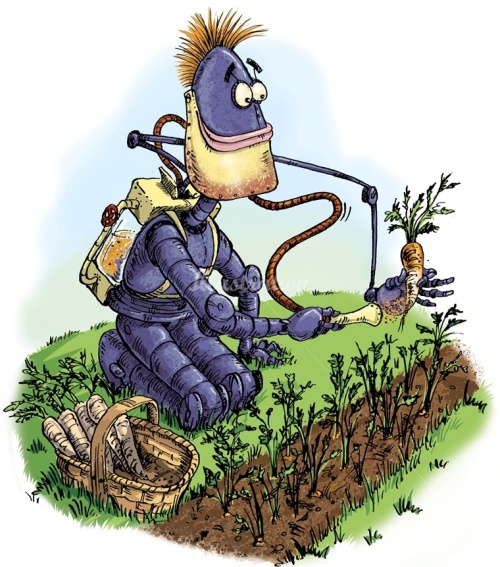
Do you think the Internet has opened doors for you?
Absolutely! Having my work on the web is like having a private art gallery in every home and office on the planet that has access to the internet.
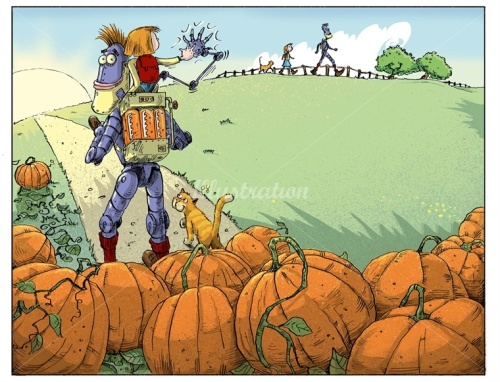
Do you use Photoshop or Corel Painter with your illustrations?
Photoshop.
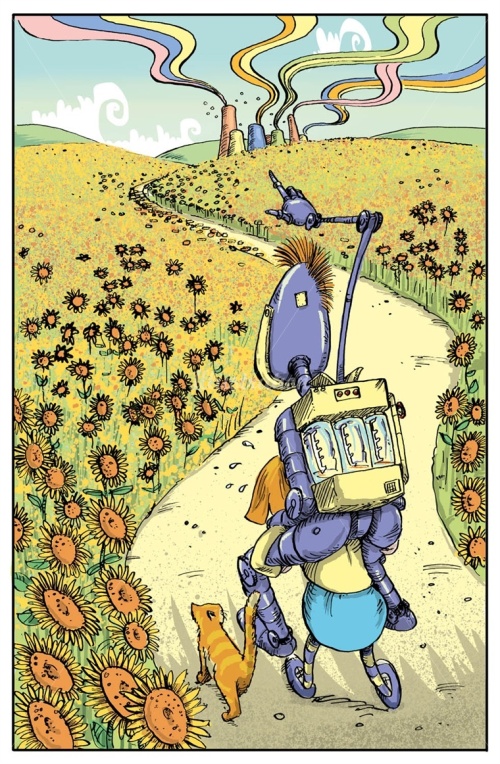 Do you own or have you used a Graphic Drawing Tablet in your illustrating?
Do you own or have you used a Graphic Drawing Tablet in your illustrating?
I couldn’t work without one. Working with a mouse is about the same as drawing with a bar of soap.
 Do you have any career dreams that you want to fulfill?
Do you have any career dreams that you want to fulfill?
One or two. I really need to write and illustrate a book.
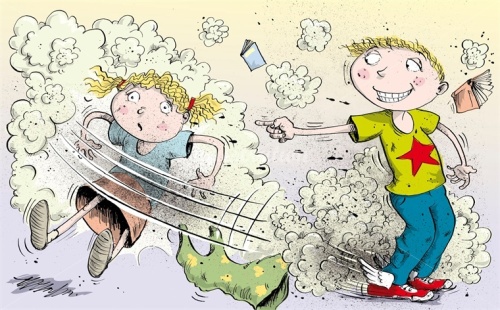
What are you working on now?
I’ve just completed the front and back cover art for a self-publishing project actually. Very imaginative. Very weird…
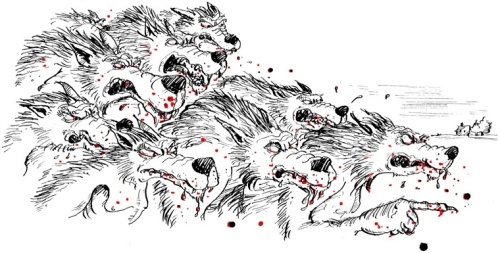 Do you have any material type tips you can share with us? Example: Paint or paper that you love – the best place to buy – a new product that you’ve tried – A how to tip, etc.
Do you have any material type tips you can share with us? Example: Paint or paper that you love – the best place to buy – a new product that you’ve tried – A how to tip, etc.
Yes: If you work digitally invest in the best and biggest display you can find. Preferably two. Don’t forget it’s your canvas. If you make your pictures on paper, remember, if you want your work to outlast you, use the best paper and media you can find.
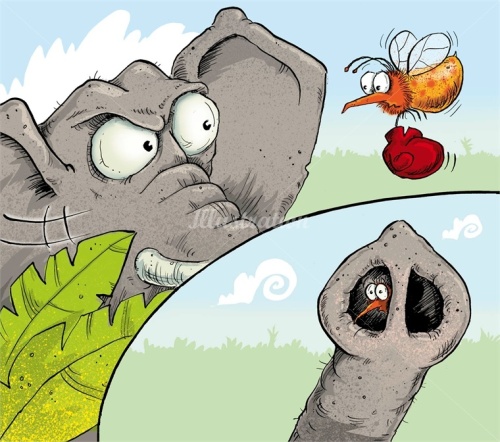
Any words of wisdom on how to become a successful writer or illustrator?
Whatever you do don’t follow fashions. Be you and keep being you.
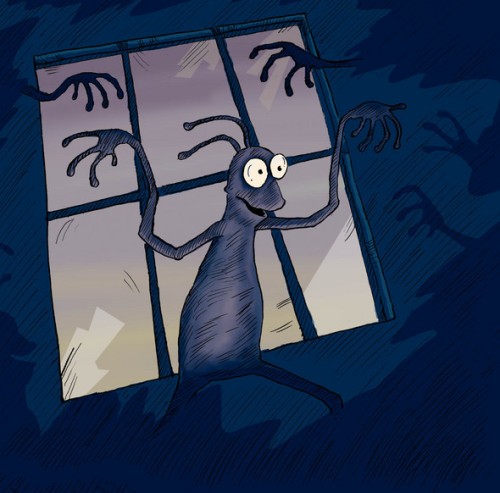
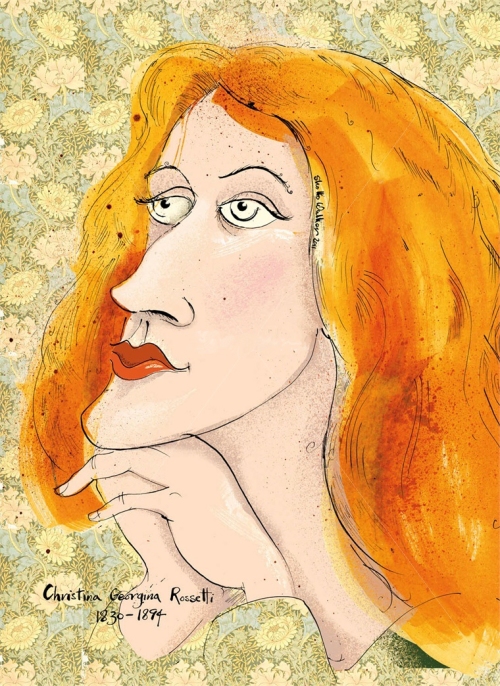
Thank you Sholta for sharing your journey and process with us. Please let us know all your future successes. We’d love to hear about them and cheer you on. You follow Sholta on Twitter @Sholtawalker
or visit his agency at: http://www.illustrationweb.us/artists/SholtoWalker/view
If you have a moment I am sure Sholta would like to read your comments. I enjoy reading them, too, even if I don’t always have time to reply. Thanks!
Talk tomorrow,
Kathy
Filed under:
Advice,
authors and illustrators,
illustrating,
Illustrator's Saturday,
inspiration,
Interview,
picture books,
Process,
Tips Tagged:
Cheltenham College of Art in Cheltenham,
England,
Ilustrationweb.com,
Sholta Walker 


By: Stacy A. Nyikos,
on 10/1/2014
Blog:
Stacy A. Nyikos
(
Login to Add to MyJacketFlap)
JacketFlap tags:
young adult,
England,
conspiracy theory,
Sally Gardner,
fascism,
alternate reality,
Maggot Moon,
authoritarianism,
moon landings,
Vaterland,
Add a tag
Maggot MoonSally Gardner
YA
I used to say I was a closet case trekkie, but this is my second post about a story with a scifi bent in less than a year. I think I've trekked out of the closet...in a Dr. Who sort of way. But that's another story.
Maggot Moon, truth be told, is less science fiction than alternate reality (along the lines of
Vaterland). Basic premise - England (or something very near it) has been taken over by an fascist authoritarian regime that wants to put a man on the moon to prove its prowess to the rest of the world. Snag - the moon is too radioactive. Any possible human visitors would fry in orbit. It's a minor technicality for the Motherland. One easily solved with good old-fashioned smoke, mirrors, and Egyptian brutality. However, they don't count on Standish Treadwell (oh, the symbolism in that name!) to stand in their way.
I enjoyed Gardner's mash of alternate reality, conspiracy theories that the United States' moon landing was a hoax, and flawed, painfully human main character. She does an excellent job of building foreboding, of making sure the reader knows this cannot end well without, however, knowing how the story will end. Writing genius.
The chapters were also amazingly short, reminiscent of Kevin Henke's
Olive's Ocean. The effect was, for me, choppy. However, both author and main character are dyslexic, and that much white space can be a godsend to a struggling reader. So, my discomfort may actually be a struggling reader's greatest comfort.
The additional illustrations throughout the book of the rat and fly give visual reinforcement to the decadence inherent in the world in which Standish is caught.
The issue that's kept me mulling is Standish's character and his development. I like Standish. He's real. He has real problems. He doesn't seem to have any real personality flaws, however. Yes, Standish has all of these problems - parents have disappeared, dyslexia, different eye colors, outcast of society, grandfather who's been reeducated, evil, brutish teachers - but they aren't personality flaws per se. He struggles with them because the world around him sees them as issues that make him less of a person. He is basically the good guy fascist systems destroy, not the conflicted protagonist whose personality shortcomings lead to destruction and, out of that, growth, such as Sara Louise in Paterson's
Jacob I Have Loved. Ah, characters. They come in all shapes and sizes!
For a cornucopia of fall delights, check out
Barrie Summy's website.
It's 1940, and British soldiers have just been evacuated from Dunkirk, but Dodo (Dorothy) Revel and her younger brother Wolfie, 8, still haven't heard from their Pa, Captain Revel. When a telegram arrives, Spud, the children's housekeeper, tells them the sad news that their Pa is missing. Later that night, however, the children overhear Spud talking to someone that seems to indicate something else about Pa.
Next thing Dodo and Wolfie know, they are being evacuated to Dulverton, North Devon. Billeted with a reluctant woman whose son is off fighting, their only relief is at school with their kind teacher Miss Lamb. One day, on their way home from school, Dodo and Wolfie find a newborn foal. For Wolfie, it's a miracle. Pa had loved horses and knew a lot about them, much of which he had already taught Wolfie. Dodo and Wolfie decide to hide the foal, now named Hero for Captain Revel, with the help of a local boy named Ned.
When word breaks that Captain Revel is being charged with desertion and disobedience at Dunkirk, Mrs. Sprig decides she can't have his children living with her. Luckily, they end up with Miss Lamb and her elderly father, Rev. Lamb. There is even a place for the growing Hero there.
Life is better with the Lambs, though not at school. The whole nation is following Captain Revel's court-martial and his children are bearing the brunt of people's anger. It is a slow process and as time goes by life gets harder, with increasing shortages and rationing. Hettie Lamb has been watching over a small herd of Exmoor ponies, which are slowly disappearing. During a particularly cold snowy winter, the ponies are rounded up, and, along with Hero, put into a pen where they can be fed. But one night, the ponies and Hero disappear. Wolfie is devestated.
When Rev. Lamb dies, Hettie is told she must move and so the three of them go to live in County Durham, a coal mining area in Northeast England. There, Dodo gives art lessons to the children of a coal mine owner, while Hettie teaches school. The war has now ended and Captain Revel is serving a two year sentence and still hoping to have his name cleared. He had always worked to improve condition for coal miners, and now, even in prison is continuing that work.
But when the truth about Ned, the boy who had helped Wolfie with Hero back in Dulverton, and the shady activities he had been bullied into doing by his father come to light, things begin to change. Is it possible the Ned holds the key to what happened to Hero?
I really enjoyed reading Sam Angus's novel
Soldier Dog when it first came out, so I was excited to read
A Horse Called Hero. And I wasn't disappointed, it is a very compelling, though somewhat predictable, story with lots of coincidences. What is nice about this story are the glimpses the reader gets into so many aspects of life during the war.
There are the pacifist demonstrations in Knightsbridge the children witness while out shopping with Spud. Sometimes we forget that not everyone supports war. The crowds of children and parents on Praed Street heading to Paddington Station was palpable. And although evacuation was difficult under the best of circumstances, Dodo and Wolfie's story show how absolutely capricious the whole process was. Mrs. Sprig was a horrible, narrow-minded woman with friends just like herself and wasn't able to really welcome these two scared, displaced children into her home. It makes one wonder how often that or worst happened in real life.
However, Angus draws a lovely picture of the relationship between Wolfie and Captain Revel in the letters exchanged throughout the war, much of which was advice on caring for a horse. Wolfie's hero worship of his father is touching, never flailing even when the circumstances surrounding Captain Revel's arrest are revealed. Captain Revel was clearly a very compassionate character and it is one of the best fiction father/son relationships I've ever read.
The reader also learns so much about what life was life for coal miners and the pit ponies, as they were called. These horses pulled tons of coal out of the mine each day, never seeing daylight once they were deep in the mine. The men and horses labored under dangerous conditions and that was what Captain Revel was working to change.
Two things did bother me - we never find out how old Dodo is, only that she is older than Wolfie. And a map showing the relationship of London, North Devon and County Durham would have been nice (maps are almost always nice in historical fiction).
But, in the end, the novel really asks the readers to consider what makes a hero. For that, it is a novel well worth reading.
This book is recommended for readers 9+, but proably better for 11+
This book was purchased for my personal library


By: Shelf-employed,
on 8/29/2014
Blog:
Shelf-employed
(
Login to Add to MyJacketFlap)
JacketFlap tags:
bullying,
war,
historical fiction,
England,
J,
Middle Ages,
Scotland,
Advance Reader Copy,
albinism,
Add a tag
Erskine, Kathryn. 2014. The Badger Knight. New York: Scholastic.
(Advance Reader Copy)
After the great plague, Adrian's father is overly protective. Having lost his wife and daughter, he is determined to protect his12-year-old son, Adrian. Small and weak, Adrian has what we now call asthma and albinism. In the rural England of the 1300s, however, his condition is more often considered an unlucky and unholy affliction - rendering him only slightly more popular than Thomas the leper. Though he is quick of mind, skillful with a bow, and able to scribe, he is nonetheless treated as useless and dim-witted.
When the Middle March is threatened by war with the Scots, Adrian sees a chance to prove his mettle,
"Soon I hear the blacksmith's voice in my head: Nock! Mark! Draw! Loose! I spread some dirt under my eyes to counteract the bright sun, close my left eye, ready my bow, and take aim at a single leaf fifty feet away. On my second shot I split the leaf in two. As I practice more, I can hit a leaf on my first try, even when it sways in the breeze. I lose all sense of time and feel like I'm in another world.
Until I hear someone approach through the woods, and I grab my arrows, stowing them quickly with my bow inside the tree trunk. For years I haven't been discovered and I don't intend for anyone to find me out now. When the time is right, I will shock them all. So I stand and look up at the branches to divert attention away from the trunk and to show that I'm simply addlepated Adrian looking at birds."
The Badger Knight is a historical fiction adventure that touches upon many common themes (bullying, friendship, gender bias, coming of age, survival, the nature of good and evil) as Adrian goes off to war and becomes a man - not by might, but by right.
"... I'm reminded of Nigel and his search for the truth. I think of what I always believed to be truths — Scots are pagans, thieves are bad, knights are noble, girls are weak, war is glorious — and how these "truths" aren't real at all. They're things I was taught or everyone believes, just as all people who look like me are supposedly angels or, more often, devils. I didn't believe Nigel when he said that scribing was power, that seeking the truth and sharing it is mightier than being a soldier.
Now I see what he means."
The Knight Badger is rich in historical details - from the minor particulars of everyday life and the societal hierarchy of medieval England to the gruesome manner of medieval warfare. Erskine offers an unvarnished look into the lives of serfs, tradesmen, religious leaders, free lances, city street urchins, and robber barons. The author's thoughts on the nature of war are on display throughout, but readers are encouraged to come to their own conclusions and examine their own biases.
A solid adventure story that should appeal to boys and girls. There is room for a sequel.
On shelves 8/26/14. Target audience: ages 8-12, Gr 3-7
352 pages

By: Stacy Dillon,
on 8/22/2014
Blog:
Welcome to my Tweendom
(
Login to Add to MyJacketFlap)
JacketFlap tags:
family,
greed,
horror,
lies,
stories,
England,
orphans,
Amulet,
Victorian England,
dark fantasy,
supernatural,
2014,
Add a tag
Molly and Kip are trying to find the Windsors, their new home of employment, but the locals are not making it easy for them. Every time Molly asks, they speak of the sour woods and tell Molly that she should stay away. But it's not like Molly has a choice - she and her brother are far from home and without parents. When they encounter Hester Kettle on the road, they seem to have found a piece of luck. She is willing to tell the children how to get to the Windsors for a promise of future stories. Molly agrees and they are soon on their way.
Molly's introduction to the family is a far cry from welcoming. Hired by the Windsor's solicitor, Constance has no idea Molly is coming and is less than pleased to find her telling stories to her young daughter Penny in the dusty foyer of the house. Constance and her son Alistair want Molly and Kip to leave immediately, but Molly is able to use her gift of the gab to convince them that they would much rather live in a well tended house, and that she and Kip can provide it for them.
She will soon live to regret this move, as the family and the house seem to be harboring dark secrets. While she is able to throw herself into the ample work of cleaning up the household during the day, it is at night when Molly is most afraid. Every night since she's been sleeping in the house, she has been having terrible nightmares. And it turns out the darkness isn't just in her mind. She wakes to find her door open, leaves in her hair and mud on the floor.
As it turns out, the Night Gardener Miss Polly has mentioned is real. He wanders the house and the grounds at night and has his hand in the nightmares of the household.
And he is not the only dark element at the Windsors' place. The tree, growing much too close to the house, is more than it seems as well, and will soon ensnare Molly as it has the Windsors.
This is a deliciously scary story that will have readers up into the night to finish. Jonathan Auxier is one of those writers who seems like he's been around forever. Not because there are a plethora of his books lining the shelves, but because he is a craftsman. His books have a timeless quality to them and are made of the stuff with staying power. The Windsor's legacy is slowly revealed piece by piece which helps bring the suspense level to that of a slow burn. He explores the themes of human weakness and greed, family and loyalty with aplomb. The setting is expertly laid out and even now as I close my eyes I can see the grounds, the stables and the green door.
Fans of dark fantasy, Victorians, and well crafted stories will be left shivering with delight.
Life seems mundane. You get up, brush your teeth, make coffee, drink coffee (a few cups to get started) and generally get ready for work. After work, you run errands, make dinner, if you have kiddies take care of their needs and the day is over. You go to bed, get up, and start all over again. It's hard work.
What does one do to relieve stress, and provide a form of necessary escape, albeit it for a brief span of time? I read and write, that is my escape.
I've raised my kiddies, delight in my grandchildren, and my work is now writing full time, but after I'm done with work, time is essentially my own. I write romance stories, that is my love, escape, and obsession if you will.
Writing allows me to escape the everyday sameness. I can kill off characters I don't like. I can fall in love with the perfect hero; he's my creation, therefore he's perfect for me.
I feel a sense of accomplishment when I've finished a story. A sense of apprehension when I start, and a sense of terror when mid-stream, there is nowhere to go and the voices are silent, and finally a sense of dread that I'm on the wrong track. I write-by the seat of my pants-I think-that is the correct cliché. I get an idea and run with it and see where it takes me.
That to me is the perfect adventure-I don't know where my characters will wind up. It's a surprise. I like that, and it works for me.
I don't quite get the same sense of nirvana when I read, but it's a very, very close second. I escape to another world, and sometimes another period in time, and I look forward to the happy ending.
I'm reasonably well read, but at this stage in my life I look to romance, mystery and humor for my escape; it is the perfect get away. There is a reason romance writing is a multi-billion dollar industry. I'm not alone.
Along with writing and reading, travel is very close to my heart. It enriches the soul, and as Mark Twain put it so succinctly. “Travel is fatal to prejudice, bigotry, and narrow mindedness...”
I have included a few pictures from Bath, England, one of my favorite places, and because A Hotel in Bath is a finalist for the RONE award. Shameless self promotion, but Bath really is magnificent.
Cheers,
Margot Justes
Blood Art
A Fire Within
A Hotel in Paris
A Hotel in Bath
www.mjustes.com
For Benjamin Goldman, 11, the
Kindertransport is a life-saver. Oh, sure, he's homesick, but the people in England are nice and there is always plenty to eat at the refugee camp. No one seemed interested in fostering Benny, though, except one nicely dressed man, but then, all he does is give him a chocolate bar and leave.
Nevertheless, next thing Benny knows is that his name is being called, and he is told that he and some other boys would be living at Fairfleet, the estate of Lord and Lady Dorner. And life at Fairfleet is pretty good, with private tutoring lessons for the boys, plenty of good food and even time for recreation and dreaming. But, Benny, who always keeps his distance from the other boys, is still haunted by things that had happened in Germany, and he just can't forget about his best friend, Rudi Lange.
The boys' benefactress, Lady Harriet Dorner, is a pilot who is often away, flying planes in the Air Transport Auxiliary. Still, when she was at Fairfleet, it seems she and Benny shared some kind of connection, which, as the years go by, becomes a deeper mutual attraction. Nothing comes of it and after the war, Benny leaves Fairfleet and goes on to a successful career as a journalist.
Now, many years later, Benny is one his deathbed, and a hospice nurse has come to care for him - at Fairfleet, which Benny had purchased after a forced sale. Little does he know at first that his nurse, Rose Madison, is really Rosamond Hunter, granddaughter of Lady Dorner and a person haunted by her own ghosts of the past at Fairfleet. But, as the days go by, Benny begins to sense something about Rose that doesn't feel right.
When a threat from Rose's childhood at Fairfleet shows up again, and begins make new threats, Rose finds she must confess her own secret in order to keep everyone safe.
And as Benny comes closer to death, it becomes clear to Rose that he needs to make his own confession of something regarding his life in Germany as a young boy. And when he finally does, it is a stunner!
There is a lot going on in Eliza Graham's novel
The One I Was. It moves between three time periods that connect Benny and Rosamond's individual stories to each other, though they are strangers when they meet. The red thread that ties them together is, of course, Lady Harriet Dorner. And though I would classify this novel as historical fiction, it is also a mystery and a thriller.
Benny's story gives the reader lots of interesting, realistic background into life in Nazi Germany in 1939, as well as life in England both during and after WWII. Graham has done her research on both early time periods and so there is an authentic blending together of events that keeps the continuity of the storyline going nicely, and framed by the present time.
Each of the characters are drawn with such depth and personality that you feel a compelling need to keep reading their story. The overriding theme of
The One I Was is the idea of reinventing oneself and why that may be done. In the end, after reading Benny's confession, you may even find yourself in a bit of a moral dilemma regarding his actions. There is no denying that Benny's story is thought provoking, but remember, hard times call for hard decisions and Benny was only a child when he made his fateful decision.
This is the kind of crossover novel I would have read and loved when I was about 15 years old and still straddling the worlds of young adult and adult novels. It has some mild violence and equally mild sexual content, but nothing a young adult reader hasn't come across already.
I One I Was is a nice meaty novel that is sure to leave you feeling satisfied.
This book is recommended for readers age 15+
This book was received from the author
This is book 7 of my
2014 Historical Fiction Reading Challenge hosted by Historical Tapestry
This is book 3 of my
2014 European Reading Challenge hosted by Rose City Reader

Last week I traveled to London and Oxford with my husband on a combined business/sightseeing trip. In Oxford I was busy doing research for an upcoming book, but I squeezed in a visit to a brand new Story Museum exhibit that I'd read about at Monica Edinger's excellent blog Educating Alice. The exhibit's curators asked a number of authors and performers (the majority will be more familiar to the British than those of us who reside on the other side of the pond) to pick their favorite childhood literary character. The chosen ones were then invited to dress up as their character and be photographed by Cambridge Jones in their new duds. Each story character was given his/her designated space or room that features the photograph as well as other props. Many include sounds that heighten the experience (the wind howls in the Mary Poppins room, for instance) or recordings of the authors and performers reading a story or being interviewed about their characters. The exhibit takes up the whole of the museum and is set up like a treasure hunt. Visitors search out all 26 characters and check them off. A completed list earns the museumgoer a prize, redeemable at the museum shop across the way.
The day I visited I was the only adult sans child, and I felt a bit conspicuous as I stalked the building clicking away with my camera. While I can't list all there was to see, here are some of my favorites. As for choosing my own childhood literary character, I have to go with Peter Pan (also chosen by author Cressida Cowell). My absolute favorite exhibit space, though, was the one dedicated to The Lion, the Witch, and the Wardrobe. Holly Smale selected Jadis, the White Witch as her character. To enter, you open an unmarked wardrobe and push past a row of fur coats. Then you're inside a magical darklit room dominated by a huge sled and a life-size photo of Smale dressed as the White Witch. Goosebumps will follow, I promise.
The entrance to the exhibit opens with a tower of cards referencing Lewis Carroll's Alice in Wonderland.

Another section features an assortment of costumes to dress up in.
And, once clad, a throne to sit on.
Neil Gaiman chose Badger from
The Wind and the Willows as his favorite character.
Katherine Rundell picked Max from
Where the Wild Things Are.
Here's Katrice Horsley sailing through the sky dressed as Mary Poppins.
Another childhood hero of mine--the Wicked Witch of the West, as portrayed by Children's Laureate Malorie Blackman.
The exhibit remains open until November so if you find yourself in the neighborhood, it is well worth a visit. And if a trip to Oxford isn't in the cards, why not dress up as your own childhood story hero? I'm getting out my green tights right now.
For Alfie Summerfield, the first five years of his life had been grand. He was a happy little boy, and his dad and mum were happy with each other and with him. His father, Georgie Summerfield, delivered milk and drove a milk float every morning pulled by a horse name Mr. Asquith. It was Alfie's dream to some day be big enough to ride along side his dad and help. Alfie's Granny Summerfield, who lived right across the street, always liked to come around for a bit of a gossip. And Alfie had a best friend, Kalena Janáček, whose father came from Prague and ran the sweet shop.
But all this changed on Alfie's fifth birthday, because on July 29, 1914, World War I officially began and a few days later England joined in. And even though he promised he wouldn't, Alfie's father immediately enlisted anyway. Then, Mr. Janáček's store windows were broken and someone wrote on the shop door "No Spies Here!" Soon enough, the government came and took father and daughter away to an internment camp on the Isle of Man.
At first, letters from Alfie's father arrive regularly, but then they begin to dwindle down and down and after two years, no more letters arrive. Alfie's mum tells her son it is because his dad is on a secret mission for the government. But times get hard and Mrs. Summerfield, who already takes in laundry, becomes a Queen's Nurse, which means most of the time Alfie is on his own. And so, he decides it is time to do his bit. He steals Mr. Janáček's prized shoe shine box, walks over to King's Cross Station and begins shining shoes three days a week (Alfie still attends school two days a week).
Then one day, almost four years after the war began, something amazing happens. While shining the shoes of a doctor, the papers he is reading get blown out of his hands. As he and Alfie scurry around King's Cross to retrieval the papers, Alfie discovers on one of them that his dad is alive and is in a hospital, the same one the doctor works at. From that point on, Alfie decides that he is going to go get his dad and bring him home. He is convinced that all that his dad really needs is to come home to recuperate and soon things will be happy again, just like they were before the war. But on his first trip to the hospital, Alfie is not prepared for what he discovers.
Alfie is one of those quirky characters that Boyne seemed to write so well. He reminded me a little bit of Barnaby Brocket (
The Terrible Thing that Happened to Barnaby Brocket) and he was certainly a more realistic 9 year old than was Bruno in
The Boy in the Striped Pajamas. It felt as though Boyne's third boy protagonist has more depth and is a more well developed character than the other two.
Georgie Summerfield is not a well developed as Alfie, but he in interesting nevertheless. Georgie has the same blind enthusiasm for the war that so many young men had when it first began. The war, the government told them, would be over by Christmas, but by jingo, they didn't say which Christmas and four years later, the reader sees how Georgie's enthusiasm has spiraled down as he lives the realities of the trenches and then suffers the consequences of the enthusiasm.
I did think that the first three quarters of the novel did a really good job of presenting life during World War I on the home front, rather than the trenches, although there is some of that in Georgie's letters home. The last quarter became a little preposterous, and the end a little predictable, but I thought other things made up for that.
Boyne addresses two issues in
Stay Where You Are & Then Leave. The first is that of conscientious objectors. As enthusiastic as Georgie was to get into the war, his best friend Joe Patience feels just as strongly about not wanting to fight. Joe is a compassionate person, who strongly believed that he was not put on earth to kill anyone cost him dearly - loss of lifetime friends, jail time, and beatings. Boyne delicately presents it all at the same time as making the reader understand Joe's position.
The other issue is that of shell shock or Post Traumatic Stress Disorder (PTSD) as it is called nowadays. In the novel, the reader sees how skeptical people were about shell shock, believing it to be more cowardice than illness, until it hit home personally for them. On Alfie's two visits to the hospital his dad is in, as he goes through the wards looking for him, Boyne gives us a very clear picture of what shell shock can do the a person's mind. I think this part of the story will resonate with many of today's children whose loved one returned from Iraq or Afghanistan suffering from PTSD.
Though somewhat flawed, this is a nice book for anyone who is interested in historical fiction, and especially the impact of WWI on the people left at home. And yes, you will discover the meaning of the title if you read the book.
This book is recommended for readers age 9+
This book was an eARC received from
Net Galley
Stay Where You Are & Then Leave will be available on March 25, 2014
A person who drives a milk float delivers milk to customers and in 1914 would be delivering it is something that looks like this:

With the fall of France and the war becoming worse for Britain, it was time for the Lockwood children, 12 year old Cecily and Jeremy, 14, to leave London. So it was off to Heron Hall, to their Uncle Peregrine Lockwood's estate, with their mother, Heloise.
Traveling on the train to the same village were groups of school children also being evacuated from London by the government. These school children are taken to the town hall and as Cecily watches them leaving one by one with women who were to care for them for the duration, she asks her mother if they couldn't also have a child. May Bright, 10, seems to fit the bill, despite her indifference towards Cecily.
Feeling powerless and picked on by her brother, Cecily wants someone that she can control and have power over. But May is an independent child with a mind of her own. And though she isn't impressed that her new luxurious surroundings at Heron Hall are more than she is accustomed to, it is the vast fields and woods that attract her. And in among it all are the remains of Snow Castle, a once beautiful castle made of white marble, where she meets two young oddly dressed boys. At first, believing they are evacuees running away from an unpleasant placement, it soon becomes apparent that something else is going on with these two boys.
When May and Cecily ask Uncle Peregrine about the castle, he begins to tell them, little by little each evening, the haunting story of Richard III, of his brother King Edward IV's death, of his two sons, the eldest of whom is next in line for the throne and how Richard had hidden the two boys in the Tower of London in order to make himself King.
Meanwhile, Jeremy, frustrated that he can't do anything to help the war effort but hid out in the country, he wants so very much to make his mark on the world. Each day, Jeremy reads the newspaper accounts of the war, becoming more and more exasperated that he is not there help. And so one night, he runs away to London. There, he discovers a burning, war torn London that he could never have imagined. Stunned by what he sees, feeling smaller than ever, Jeremy manages to do the very thing he sets out to do - help the war effort. It is his coming of age moment and Jeremy returns to Heron Hall a very different boy.
No one can turn a phrase, creating a hauntingly brilliant story quite like Sonya Hartnett can. Gracefully creating lyrical phrases, and characters that are hard to forget as you begin to recognize parts of yourself in each of them. There is spoiled, selfish Cecily, who, the reader thinks, will grow up to be just like her shallow, socialite mother, Heloise, but who surprises us so often; May, quiet and thoughtful, careful but unafraid, she becomes a favorite of Uncle Peregrine (kindred souls? maybe); Jeremy, on the cusp of becoming a young man and wanting to get there way too soon - all so realistically and captivatingly drawn.
The Children of the King is the story of the powerlessness of children and the people who want to control them - of the two princes at the hands of Richard III who craves power and control, of England's children at the hands of German bombs, sent by a dictator who also craves power and control. But it is on a smaller scale that we see how little power and control others really have over us unless we let them. Despite all Cecily's attempt at controlling May, she is the one who remains an independent spirit. And it is by running away, that Jeremy discovers the power each of us has to change another person's life.
Just as she did in
The Midnight Garden, Hartnett once again uses the device of magical realism and of a story within a story. Here, they is used as a means of connecting past and present, reminding us that the past is never past, it lives in the present or as May tells the two boys in the castle "Everything is connected…We are here because you are here."And the dialectic that Hartnett creates in
The Children of the King is just wonderful.
I should tell readers that there are a few graphic descriptions when Jeremy goes back to London, giving a sense of realism, but not graphic enough to scare away middle grade readers. And one does not need to already know the story of Richard III to understand Uncle Peregrine's story, he weaves in enough of it for readers to understand it perfectly well.
I put off reading this novel because I was afraid that I would be disappointed.
The Midnight Garden was such a brilliant book, had Hartnett set her own bar too high? No, the bar is high but
The Children of the King is right up there. But, in the end, all I can says is fans of Sonya Hartnett, rejoice! To those who will be reading her for the first time with this novel, you are lucky ducks.
This book is recommended for readers age 10+
This book was and eARC from
Net Galley
The Children of the King will be available on March 25, 2014


By: Shelf-employed,
on 3/5/2014
Blog:
Shelf-employed
(
Login to Add to MyJacketFlap)
JacketFlap tags:
siblings,
book review,
horror,
historical fiction,
fantasy,
England,
J,
orphans,
Ireland,
Advance Reader Copy,
Add a tag
 A short review today. I rushed to finish, as I knew the kids in my book club would surely want to get their hands on it last week. I was right.
A short review today. I rushed to finish, as I knew the kids in my book club would surely want to get their hands on it last week. I was right.
Auxier, Jonathan. 2014. The Night Gardener. New York: Amulet.
Set in England aground the 1840s, The Night Gardener features an Irish gal with the gift of blarney, her10-year-old brother with a lame leg and stout heart, a mysterious storyteller, and a strange family inhabiting a creepy mansion on an island in the middle of the sourwoods.
Separated from their parents and forced to flee Ireland due to famine, Molly & Kip have no choice but to accept employment with the Windsor Family, the only inhabitants of the only home in the sourwoods,
At the far end of the lawn stood Windsor mansion. The house had obviously been left vacant for some years, and in that time it seemed to have become one with the landscape. Weeds swallowed the base. Ivy choked the walls and windows. The roof was sagging and covered in black moss.
But strangest of all was the tree.
The tree was enormous and looked very, very old. Most trees cast an air of quiet dignity over their surrounding. This one did not. Most trees invite you to climb up into their canopy. This one did not. Most trees make you want to carve your initials into the trunk. This one did not. To stand in the shadow of this tree would send a chill through your whole body.
Even Molly's indomitable spirit and knack for storytelling cannot shield Kip and the young Windsor children from the horrors that lurk within the shadow of the giant tree.
Historical fiction and horror intertwine in this absolutely gripping story. With similarities to Claire LeGrand's
The Cavendish Home for Boys and Girls,
The Night Gardener is the stuff of nightmares.
Coming to a bookshelf near you in May, 2014!
Notes:
My Advance Reader Copy was thrust upon me by none other than the wonderfully funny, Tom Angleberger (of Origami Yoda fame), who insisted that I read it. Thanks, Tom!
Also by Jonathan Auxier, Peter Nimble and His Fantastic Eyes, which I reviewed in 2011.
The book's cover was drawn by Patrick Arrasmith and designed by the talented Chad Beckerman, whom I had the pleasure of interviewing a while back.
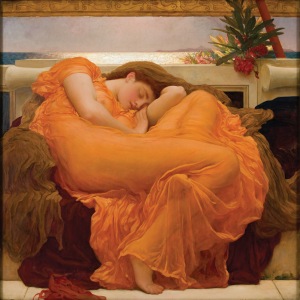
Because why not?
This post is brought to you by my tendency not to think things through before I write about them.
So, the thing about Mrs. George de Horne Vaizey is that she was lousy at endings. Like, she’s so good at putting prickly characters in twisty emotional situations and still having everything be super charming, but then the end is always a cop-out, or rushed, or suddenly makes you hate all the characters you loved for most of the book. Anyway, I read a review of one of her books at Fleur in her World the other day, and Fleur had the same issue with the last 10% of the book, but her praise for the first 90% made me want to read something by Mrs. G. de H.V., because when she’s good, she’s very, very good.
Flaming June skirts the ending issue altogether, by…not having one, sort of. And I can’t decide how I feel about that. Mrs. G. de H.V. basically spends half the book turning tropes upside down, and the other half taking other tropes super seriously and I can’t tell whether she’s doing any of it on purpose. And the self indulgent part of me wants a sequel, and the critical part of me is pretty impressed with Mrs. G. de H.V. for leaving things unresolved, and then just about all of me wants a sequel that has almost nothing to do with the main characters, but follows the villainess as she carries out the plans the heroine lays out for her.
Anyway.
When I started Flaming June, I thought, “oh, this is Mrs. G. de H.V.’s L.T. Meade book,” because there’s a breezily unconventional American girl and a sweet, sheltered English one who become best friends. But Elma, the English girl, hasn’t got the depth that Meade’s more conventional characters have, and Cornelia, the American, has more of Mrs. G. de H.V.’s respect than Meade ever gave any of her characters. Cornelia has come to stay with her cranky spinster aunt in a quiet neighborhood, and of course everyone’s familiar with the narrative of the cheerful young person making over the stiff and uncompromising elderly relative, but Mrs. G. de H.V. passes that by — it’s a story, but it’s not this story. Likewise the story of the brash American and the proud English girl finding common ground — Mrs. G. de H.V. concentrates on Cornelia and Elma’s friendship only long enough to throw Elma into the arms of her longtime crush, Geoffrey Greville. And to introduce Cornelia to Captain Rupert Guest, who doesn’t like her at all, until he does.
Mrs. G. de H.V. structures her romances as problems, which I enjoy, except that she’s kind of too good at it. I think that’s where a certain amount of her lousy finishes come from — she creates problems that are actually insoluble, and has to do violence to her characters in order to resolve them. The Guest/Cornelia problem is that they’re nothing alike, have no common interests, and don’t always even like each other very much. Which, if you think about it, is a problem you see in romances all the time, only it’s waved away, and you’re assured that the characters are going to be very happy together. And if the author is good enough, you believe it.
So, yeah, I was kind of concerned. Because Mrs. G. de H.V. IS good enough, but she also has this tendency to write herself into a corner. And that’s what she does, and…that’s where she leaves it. My respect for Mrs. G. de H.V. has increased enormously.
I realize I’m neglecting the book itself to talk about my various Mrs. George de Horne Vaizey feels, but I do find her really fascinating. She’s so good at certain things, but I never trust her. She’s always doing icky things like shoving characters back into their strictly defined gender roles and/or destroying everything I liked about them with one action. So when I come to a book like Flaming June, and I can see Guest constructing a different version of Cornelia in his head, one that’s based mostly on her least characteristic actions, I’m apprehensive. And then Mrs. G. de H.V. explicitly recognizes that. It’s tremendously satisfying and not satisfying at all. But mostly I feel pretty good about it. Well done, Mrs. G. de H.V.
Tagged:
1900s,
england,
mrsgeorgedehornevaizey,
romance 

View Next 25 Posts






















 Sholta Walker was trained and graduated as a painter in 1988 and since 1995 he has worked professionally as a full-time artist and illustrator.
Sholta Walker was trained and graduated as a painter in 1988 and since 1995 he has worked professionally as a full-time artist and illustrator.





































 Do you own or have you used a Graphic Drawing Tablet in your illustrating?
Do you own or have you used a Graphic Drawing Tablet in your illustrating? Do you have any career dreams that you want to fulfill?
Do you have any career dreams that you want to fulfill?
 Do you have any material type tips you can share with us? Example: Paint or paper that you love – the best place to buy – a new product that you’ve tried – A how to tip, etc.
Do you have any material type tips you can share with us? Example: Paint or paper that you love – the best place to buy – a new product that you’ve tried – A how to tip, etc.
























What fun!
Experienced a brief panic as I wondered what was wrong with my monitor that was making all these white dots glide across it.
Haven’t yet read Flaming June, but completely agree with everything you say about Mrs G. Either endings were not her thing and she preferred the process to the result, or she just wrote until she got bored and decided to wind it up right away, regardless of what that did to the story.
Try Lady of the Basement Flat if you haven’t already. The ending is also abrupt, but not as irritating as some of Mrs G’s others.
:D I love it when WordPress makes my blog snow. I think it just does it all December.
I have read The Lady of The Basement Flat, and enjoyed it — I’m not sure why I didn’t post about it.
I suspect she just had no patience once she resolved the romance plot, but it’s so frustrating, because she’s almost fantastic.